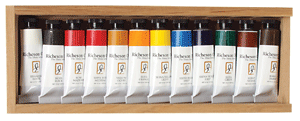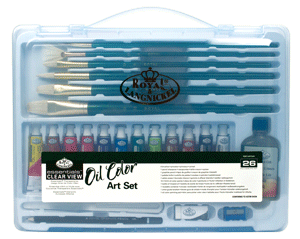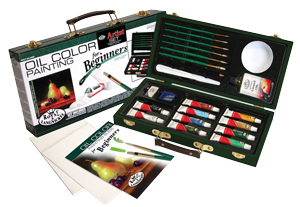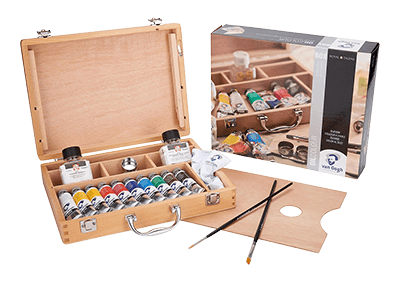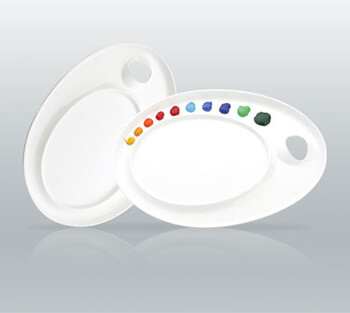Browse Rex Art’s extensive selection of oil painting gifts for you or your favorite gifted artist. Refill dwindling art supplies, experiment with a new medium or surprise a creative loved one with oil painting gift sets and starter kits. Each kit is filled with premium quality supplies ideal for creating a masterpiece with oils. When you buy your oil painting gift sets and oil painting starter kits from Rex Art, you’ll receive anywhere from 20% to 80% off the retail price without sacrificing quality. The knowledgeable artists at Rex Art have spent over 50 years in the art supply business, and have used that knowledge to carefully hand select the best oil painting gifts available. Whether you’re looking for an oil painting brush set or an entire gift kit, complete with canvas and color wheel, you’ll find extraordinary products for unparalleled prices. For added value, Rex Art offers FREE Shipping on orders over $100!*
Oils are an extremely versatile medium that push artists to explore the boundaries of their creativity. However, they can be fussy and it takes practice to get a handle on the paints. Even the best oil painters are always learning more about this intriguing medium. Here are some things to remember when using testing the supplies found in our oil painting gifts:
- The “Fat over Lean” Principle: Each layer of oil should be thicker than the previous layer. The bottom layers absorb moisture from the top layers, but if the top layers are thinner they can crack.
- Linseed oil is optimal for bottom layers in a painting because it dries more thoroughly than other oils. However, substitute linseed for poppy oil if you’re using whites or blues – linseed oil has the tendency to yellow.
- Do not dry paintings in the dark or a thin film may rise to the top and yellow your painting.
- Hold your brush near the middle or end of the handle. Oil brushes are long for a reason. Speaking of brushes, purchase a nice set for oil painting (preferably hog hair, sable or synthetic sable). Nylon brushes tend to lose bristles in the paint.
- Your workspace should have abundant natural lighting. Rex Art offers several of Daylight Full Spectrum products for excellent prices. If natural sunlight is scarce, perhaps invest in an artificial daylight lamp is a good investment. You should also make sure your space is well-ventilated.
- Green art supply product
- Drop Ship - Item is shipped from manufacturer
- Oversized - Additional shipping may apply
- Item Ships via Truck - Additional shipping will apply
*Free Shipping Offer valid for single package non-oversized shipments over $100.00 (after all applicable coupons have been applied) and under 20 lbs. within the 48 contiguous United States only. All other areas must pay shipping and handling charges. Exclusions apply. Orders for stretcher bars, cradled wood panels, stretched canvas, flammable items, closeout or discontinued merchandise cannot qualify for our free shipping promotion. We reserve the right to ship via the carrier of our choice.
Copyright © 1997 - 2025 by Rex Art Co. All rights reserved. Prices shown are in U.S. Dollars. Prices are subject to change.

